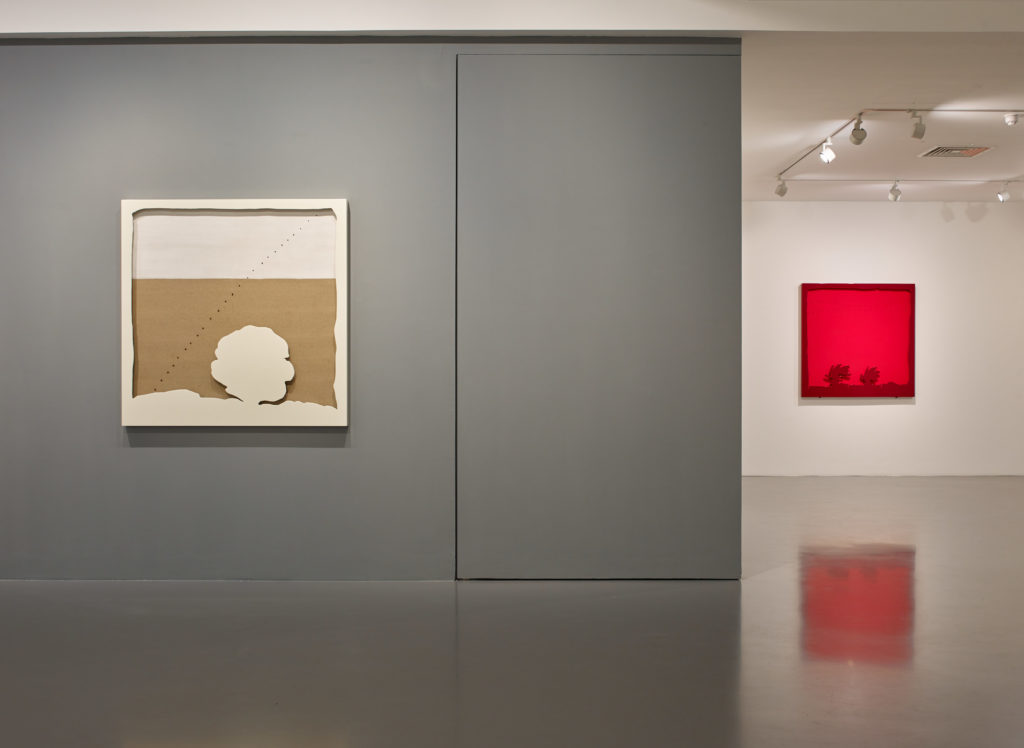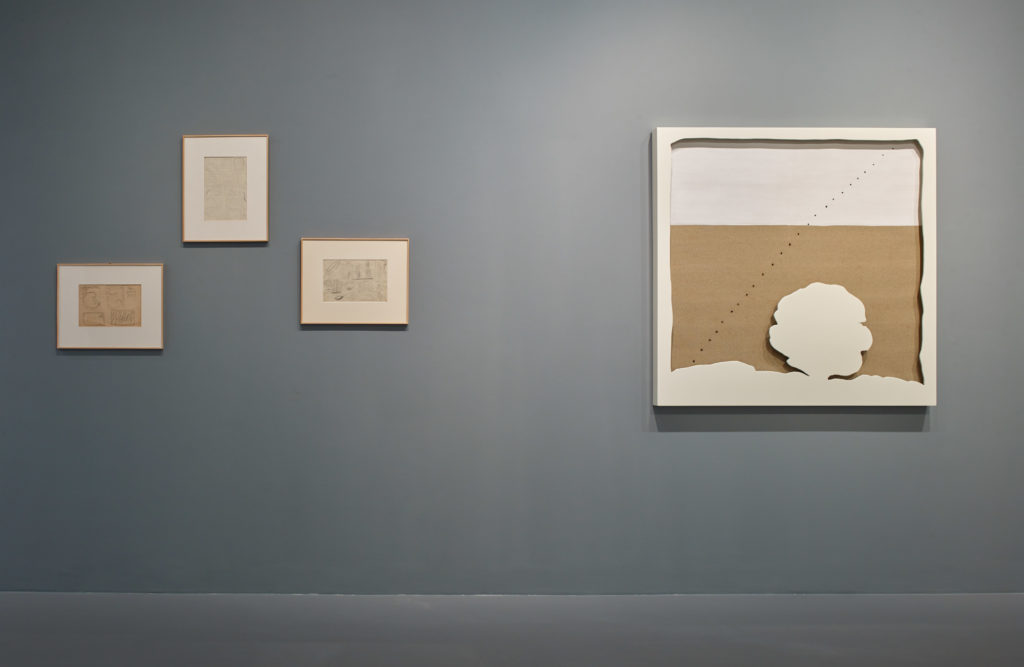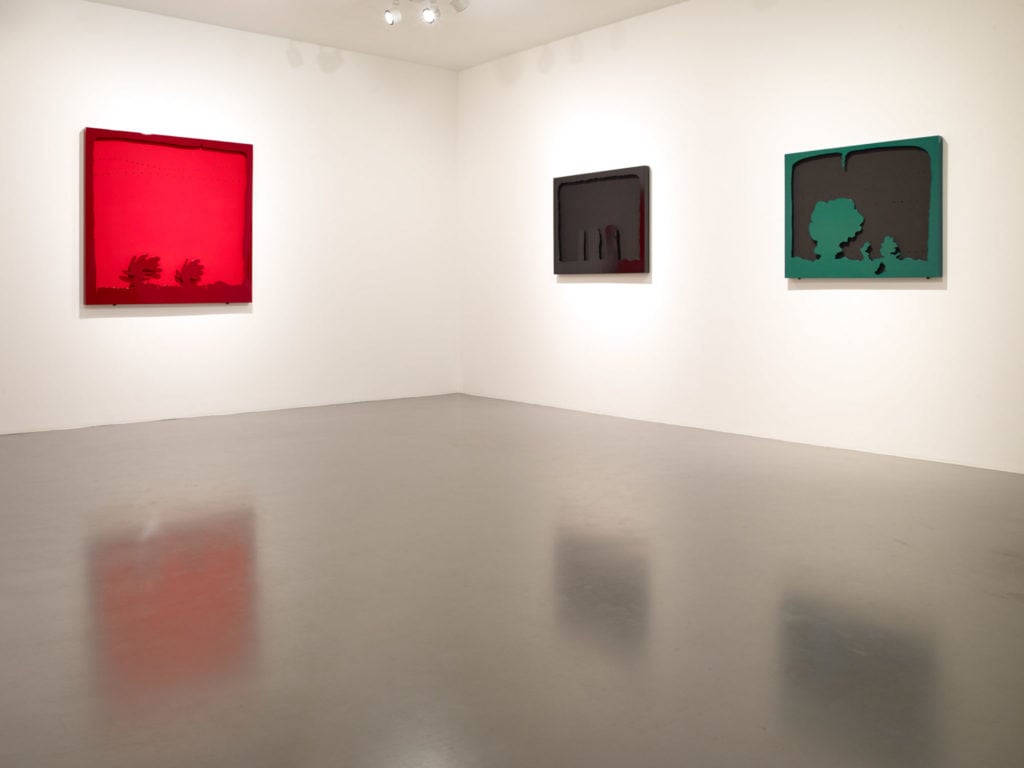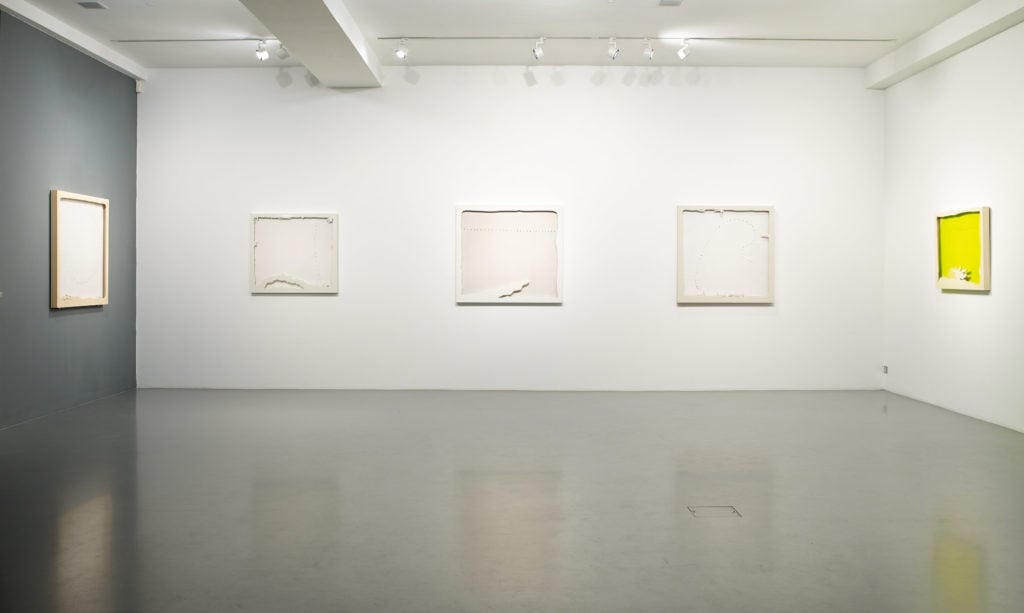‘He Wanted to Create a New Dimension:’ See Lucio Fontana’s Little-Known Final Series at Nahmad Projects in London


Artnet Gallery Network

In the mid-1960s, Lucio Fontana was at the height of his powers. He was also near the end of his life. He had pioneered a new art movement—spatialism—and produced some of his best-known bodies of work, including Buchi (“holes”) and Tagli (“slashes”).
Around this time, Fontana began a new group of paintings—his last true series before he died in 1968. With cutaway canvases layered on top of one another, he created scenes out of negative space, which he called Teatrini (Italian for “little theaters”).
The Teatrini aren’t as well-known as some of Fontana’s previous works, due in large part to their limited number—there are only 180 today, compared to the thousands of slash paintings—and the fact that they haven’t been shown often. But for fans of the artist’s work, the series represents a special place in his oeuvre.

Installation view of “Lucio Fontana: I Teatrini,” 2018. Courtesy of Nahmad Projects.
Now, Nahmad Projects in London is showing a selection of these special works, alongside several works on paper. The exhibition is a rare chance to see several Teatrinis presented together—the first occasion in more than 20 years, in fact—and the only time they’ve been shown as a group outside of Italy.
For Joseph Nahmad, the young gallerist behind the show, it’s difficult to convey the specialness of these works without seeing them in groups.
“It’s impressive to see them all together,” Nahmad tells artnet News. “When you view these works one at a time at an auction house or a venue like that, you don’t get the full context. Here you get to see just what this body meant to him. And when all the paintings are lined up together, they kind of connect from painting to painting; it looks like the dots are moving.”

Installation view of “Lucio Fontana: I Teatrini,” 2018. Courtesy of Nahmad Projects.
This sense of movement is one of the elements that first attracted the dealer. Nahmad thinks of them like footsteps—a possible reference to the first spacewalk, he speculates, which happened in 1965, around the time the artist was working on the series. Indeed, Fontana was fascinated by the space race, and given the works’ use of negative space, it’s not hard to see how the idea of making contact with a world outside our own may have been a influence.
“In his ‘White Manifesto’ of 1946, he called his painting a new medium. He wanted to create a new dimension,” says Nahmad. “With these works, he did that. There’s so much beyond the actual canvas and those frames—they show us that there’s a big cosmos in the distance and you have to go and reach out and see how vast space is. They kind of remind us of how small we are in this huge universe.”

Installation view of “Lucio Fontana: I Teatrini,” 2018. Courtesy of Nahmad Projects.
“Lucio Fontana: I Teatrini” is on view at Nahmad Projects through December 14, 2018.